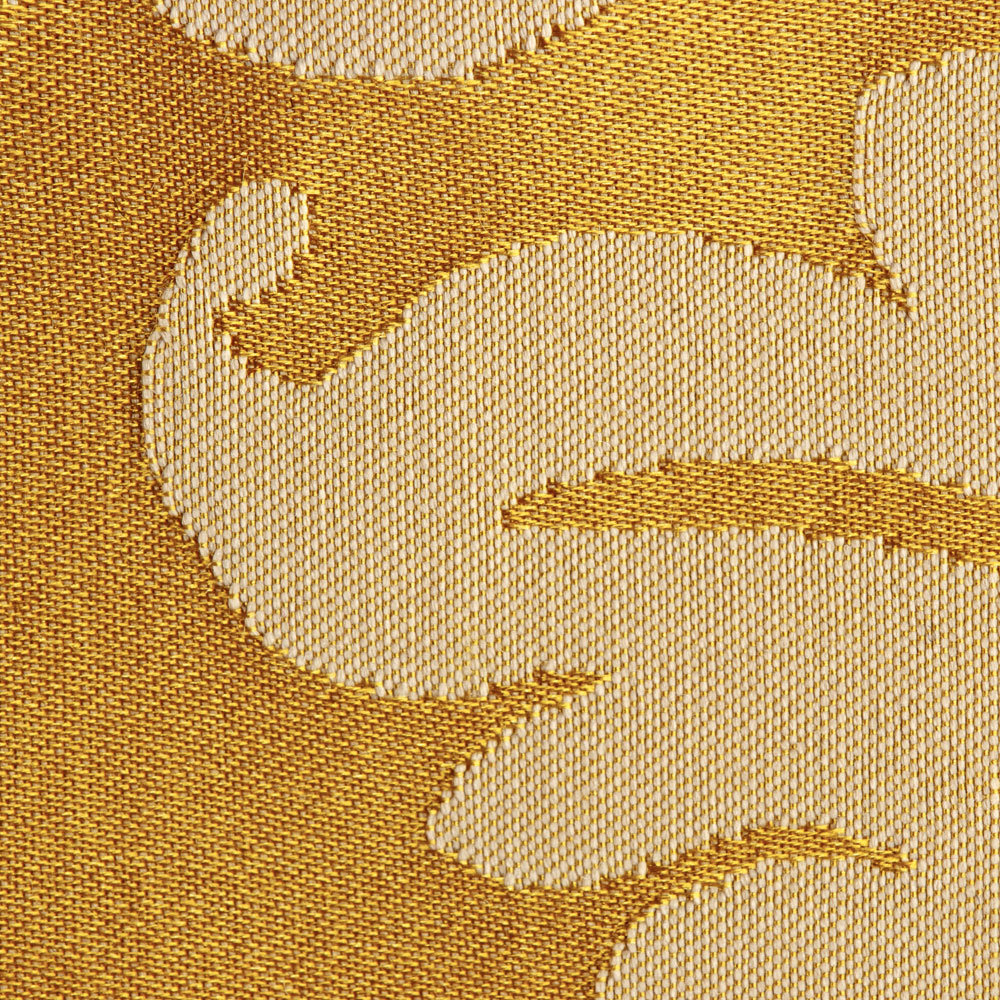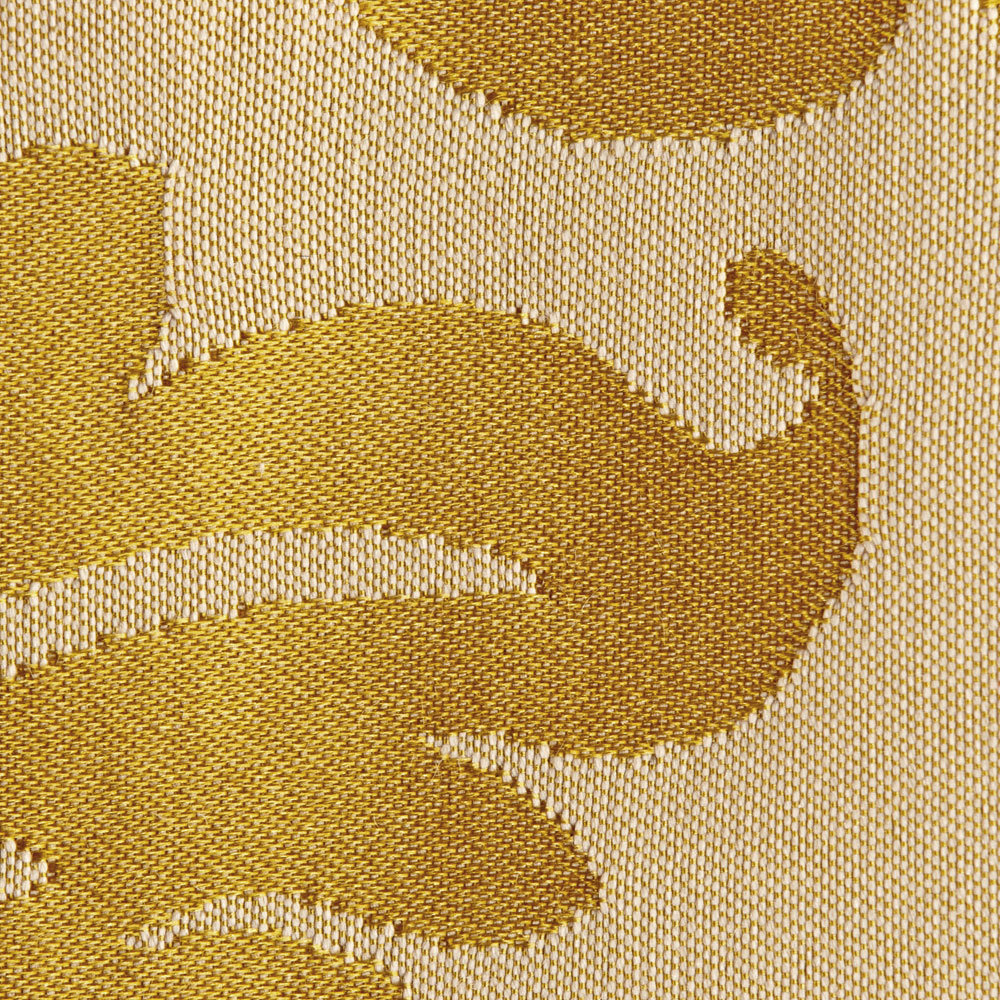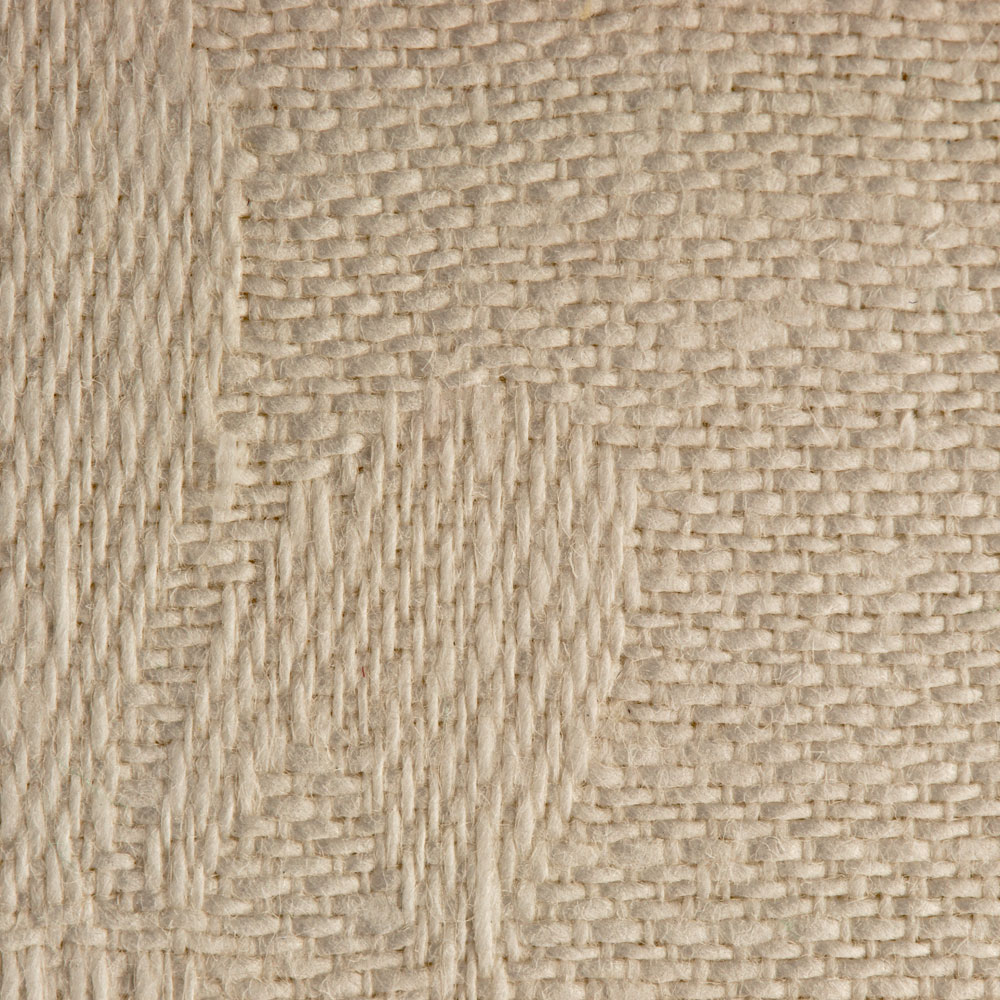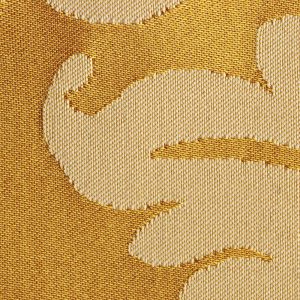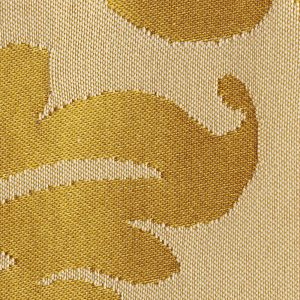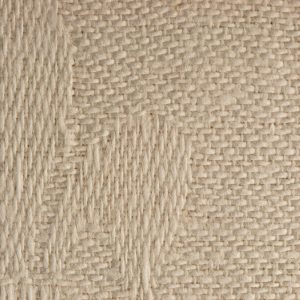Damask differs from its jacquard relative brocade in that it can be reversed, although the reverse will feature the woven-in pattern in “negative.” Damask is characteristically one color but two different weaves, to set the patterns apart from the ground. If the pattern is satin on the face, it will be dull on the reverse. If two colors are used, these will be reversed on the back of the fabric.
The fabric gets its name from Damascus, Syria, a trade hub where this silk fabric from China was introduced to Europe. Starting in the 15th century, European damasks were made of linen; both staple fiber and filament fiber damasks are made still. Table linens of cotton and blends are often damask.
Uses: Table linens, household decorations, towels, wraps, evening wear, accessories
See also:
Brocade
Jacquard, woven
